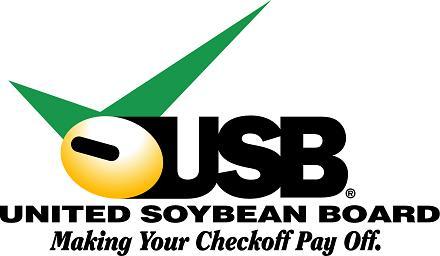
Agricultural News
Soy Checkoff Study Shows Infrastructure Investments Could Save U.S. Farmers Millions
Mon, 20 Aug 2012 11:37:37 CDT

U.S. farmers depend on a 50-year-old highway system, a 70-year-old inland waterway system and a railway network build in the late 1800s to move their products from the fields to end users. This aging transportation system has been providing U.S. soybean farmers a competitive advantage in the global market, but a recent study funded by the United Soybean Board's (USB's) and soy checkoff's Global Opportunities (GO) program supports the growing evidence that this advantage continues to be threatened by the deterioration of U.S. highways, bridges, rails, locks and dams. The study, "Farm to Market A Soybean's Journey," analyzed how soybeans and other agricultural products move from the farm gate to customers, highlighting weaknesses found in the system along the way. The study was recommended by the checkoff-funded Soy Transportation Coalition.
"The entire transportation network has been vital to the U.S. soy industry, not only in moving our product to domestic processors but also in delivering U.S. soy to our international customers as well," says Dale Profit, soybean farmer from Van Wert, Ohio, and USB director. "We need to protect this advantage if the United States is going to remain the preferred source for soy throughout the world."
The U.S. inland waterway system remains a precarious leg of a soybean's journey. The deteriorating lock system remains at risk of failure, and dredging needs to be done to encompass new larger ships that will be possible with the expansion of the Panama Canal, due to open in late 2014. The U.S. Army Corps of Engineers has the responsibility to maintain a depth of 45 feet on the lower Mississippi River, but, due to funding issues, has not been able to dredge to maintain an adequate navigable channel, limiting ships to 42-foot draft, meaning the vessel holds fewer soybeans. If U.S. waterways cannot accommodate these larger ships, the U.S. soy industry may not be able to capitalize on the potential advantages that the expanded Panama Canal will offer. The checkoff-funded study also shows that limiting the volume of soy that can be in one shipment could lead to higher freight costs.
The U.S. railway network has also been under pressure, especially as more U.S. soybeans have made their way to China. The industry has seen an increase in rail movement from the western Soybean Belt to the Pacific Northwest. In 2009-2010, 68 percent of U.S. soybeans traveling by rail ended their U.S. journey in the Pacific Northwest. The study predicts that China's import of U.S. soy will continue to grow, doubling by 2020-2021.
"Brazil has several proposed infrastructure projects that haven't been completed yet," adds Profit. "But if those improvements are made in Brazil, it would put them on par with U.S. soybean farmers as far as transportation costs, and we would lose that advantage."
Improvements to the transportation infrastructure would make the movement of U.S. soy and other agricultural products more efficient, totaling expected cost savings to U.S. soybean and grain industries of $145.9 million annually, according to the study.
U.S. farmers wouldn't be the only ones to benefit from improved infrastructure. Several U.S. industries remain fully dependent on oilseeds and grain. These industries annually provide 1.5 million jobs and more than $352 billion in U.S. output, $41 billion in labor earnings and $74 billion in value added on to the U.S. economy.
WebReadyTM Powered by WireReady® NSI
Top Agricultural News
More Headlines...



















